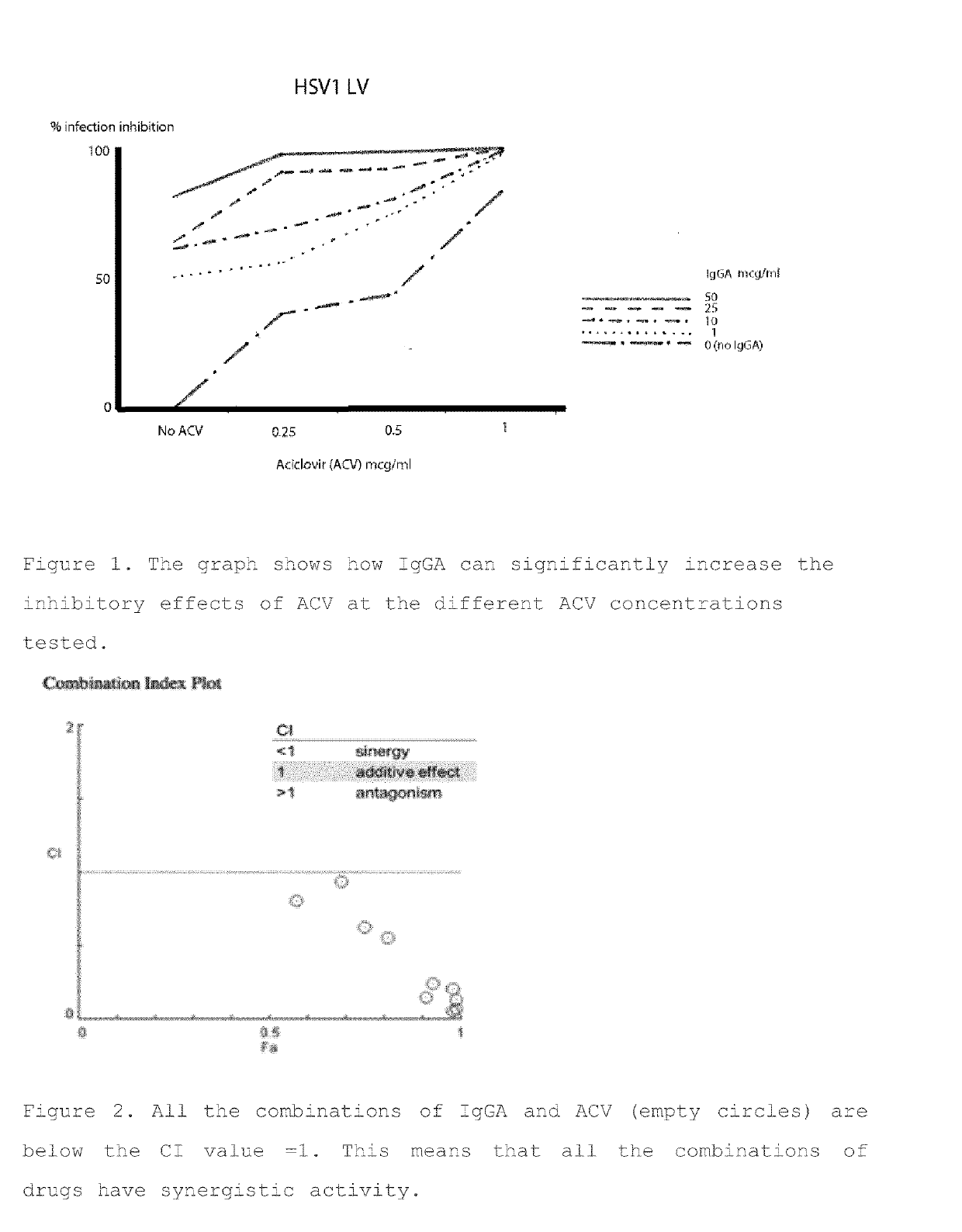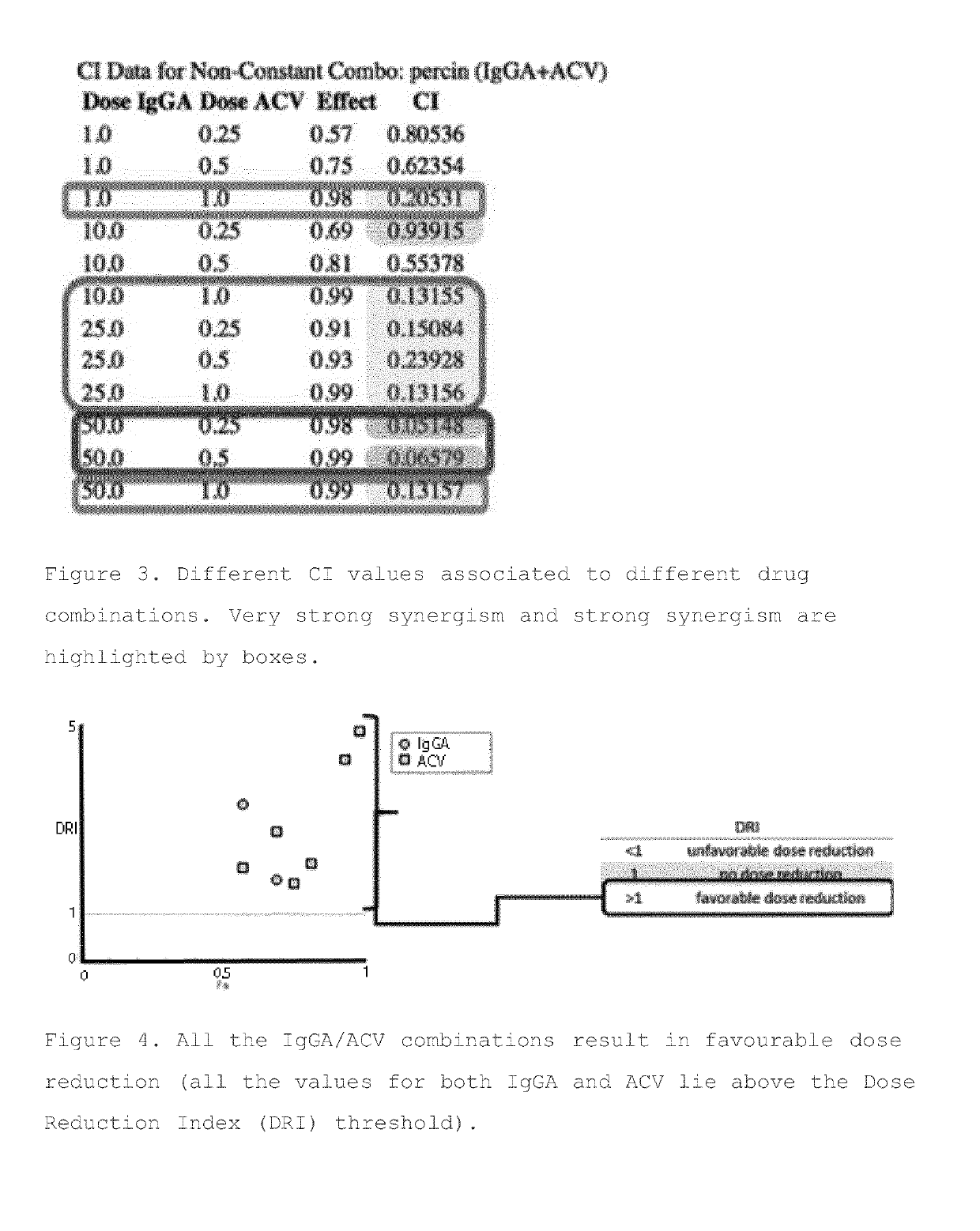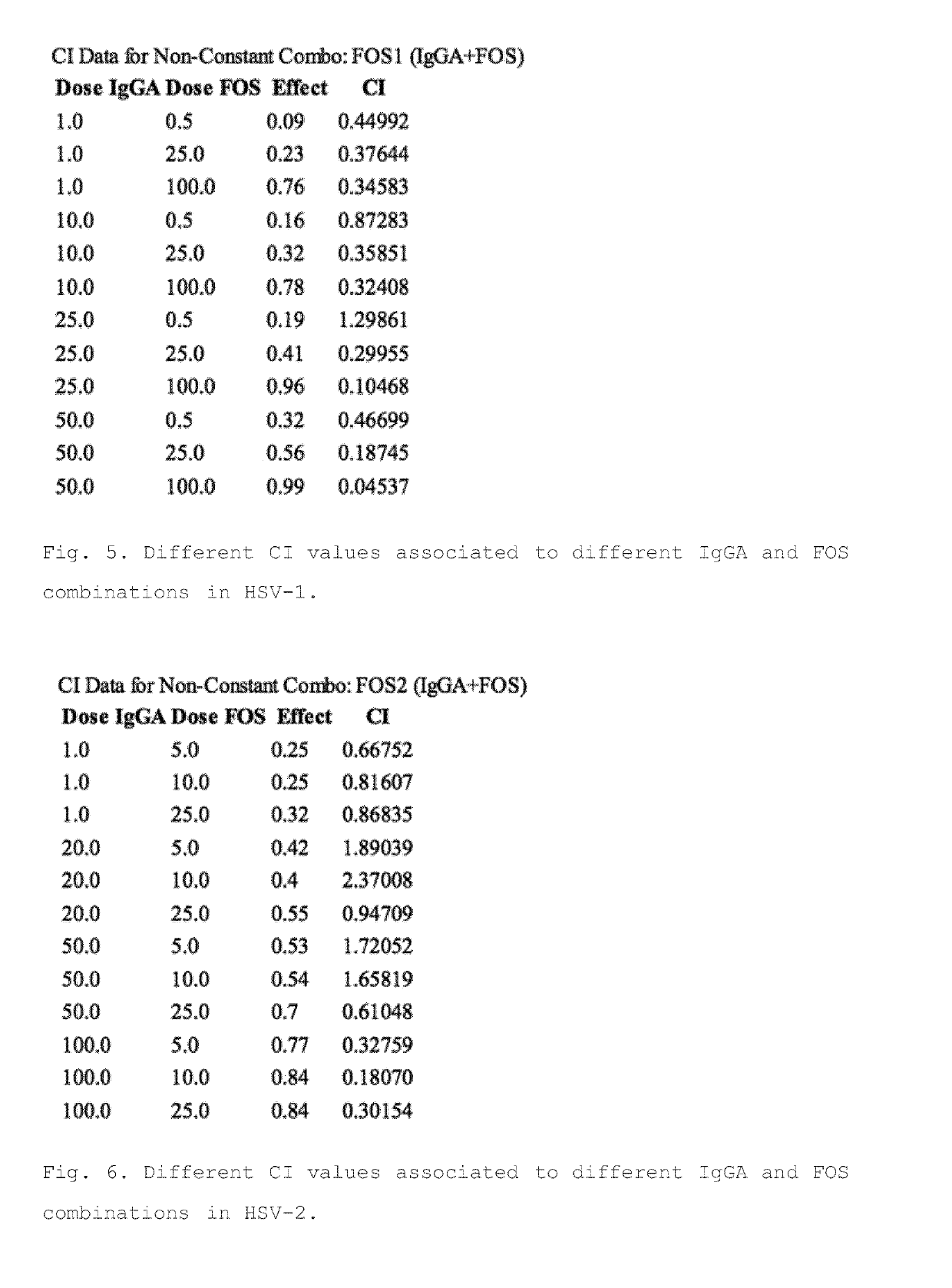Anti-hsv synergistic activity of antibodies and antiviral agents
a technology of antiviral agents and antibodies, applied in the field of antihsv synergistic activity of antibodies and antiviral agents, can solve the problems of reducing the risk, frequency or severity of recurrence, preventing the spread of latent viruses, and shortening the viral shedding period
- Summary
- Abstract
- Description
- Claims
- Application Information
AI Technical Summary
Benefits of technology
Problems solved by technology
Method used
Image
Examples
example 1
[0427]Evaluation of the Emergence of Escape Mutants Under Selective Pressure of IgGA
[0428]VERO-E6 monolayers were infected with HSV-1 HF strain using 50 pfu / mL of cell free virus. After virus complete adsorption, the infected cells were treated for three days with subinhibitory concentrations of IgGA, namely 0.2 mg / ml and 1 mg / ml.
[0429]Experimental controls were unrelated IgG (at concentrations of 0.2 mg / ml and 1 mg / ml) or no treatment. After three days, the infected cell media were collected, centrifuged and the supernatants used for new cell infection rounds, for a total of 5 sequential rounds. Cell supernatants of the last infection round were centrifuged and used to perform five new rounds of infection in the presence of higher concentrations of IgGA (5 mg / ml and mg / ml). The cell free supernatants belonging to the final infection round were incubated 1 h at 37° C. in the presence of high IgGA concentrations and then used to infect new VERO-E6 cells.
[0430]Results obtained demonst...
example 2
[0431]Evaluation of Synergistic Activity of IgGA and Acyclovir
[0432]To investigate the synergistic activity of IgGA and Acyclovir (ACV), different concentrations of Acyclovir and IgGA were tested in combination in a double curve assay in vitro.
[0433]Briefly, different IgGA concentrations (0, 1, 10, 25, 50 μg / ml) were combined with different ACV concentrations (0, 0.25, 0.5, 1 μg / ml) and added to VERO E6 cells, 30 min after HSV infection. After 48 h of incubation the infected cells were stained with Crystalviolet / EtOH and plaques of lysis counted. Results show that IgGA combined with Acyclovir can significantly increase the inhibitory effects of Acyclovir at the different concentrations tested (FIG. 1).
[0434]Results obtained in the double curve assay were then analysed in silico in a ComboSyn analysis (CompuSyn for Drug Combinations and for General Dose-Effect Analysis by Ting-Chao Chou Memorial Sloan-Keltering Cancer Center New York, N.Y. and Nick Martin Massachustts Institute of Te...
example 3
[0439]Evaluation of Synergistic Activity of IgGA and Foscarnet
[0440]In order to test the possible use of IgGA in combination with anti-HSV drug Foscarnet (FOS), IgGA / FOS combinations have been tested in post-HSV entry assays (assays performed at 37° C. allowing virus entry).
[0441]The first step in IgGA / FOS combination activity evaluation has been the assessment of drug susceptibility for the two chosen HSV isolates already used for the Example 2. The FOS concentrations chosen to perform synergistic assays FOS / mAbs have been 0,5, 25 and 100 mg / ml against HSV-1 LV and 5, 10 and 25 mg / ml against HSV-2 MS. Combination index was calculated as in Example 2 to assess the synergism between IgGA and FOS.
[0442]CI: combination index
[0443]The combination index calculation demonstrated that all except one combinations of IgGA with FOS resulted in synergistic activity against HSV-1 tested isolate, as only a single drugs combination showed a CI>1 (FIG. 5). Moreover, synergism could be reached by u...
PUM
| Property | Measurement | Unit |
|---|---|---|
| Mass | aaaaa | aaaaa |
| Mass | aaaaa | aaaaa |
| Mass | aaaaa | aaaaa |
Abstract
Description
Claims
Application Information
 Login to View More
Login to View More - R&D
- Intellectual Property
- Life Sciences
- Materials
- Tech Scout
- Unparalleled Data Quality
- Higher Quality Content
- 60% Fewer Hallucinations
Browse by: Latest US Patents, China's latest patents, Technical Efficacy Thesaurus, Application Domain, Technology Topic, Popular Technical Reports.
© 2025 PatSnap. All rights reserved.Legal|Privacy policy|Modern Slavery Act Transparency Statement|Sitemap|About US| Contact US: help@patsnap.com



